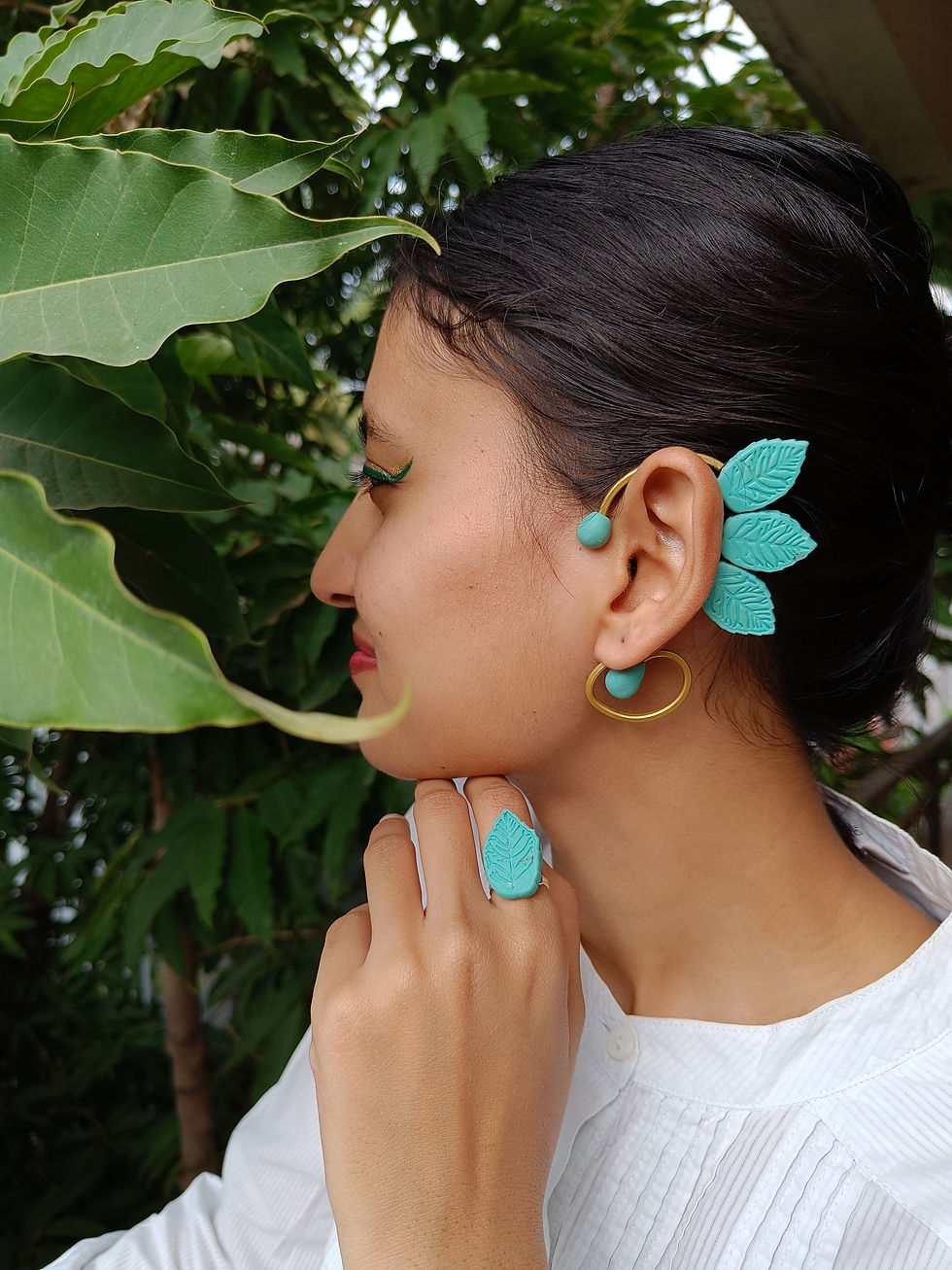Discover the Gender Neutral Earcuff from TOBU TORI, a masterpiece of leafy elegance that adds style to any look. Handcrafted with love, this outstanding piece complements all genders, making it a truly versatile accessory. Elevate your fashion game effortlessly with an earcuff that embodies both sophistication and individuality.
Gender Neutral Earcuff
₹450.00Price
0/500
Out of Stock
Polymer clay is a versatile and durable material used to create a wide range of items, from jewelry to figurines. To ensure that your polymer clay creations stay in great condition, it's important to care for them properly. Here are some useful tips:
1. Avoid Direct Heat and Excessive Sunlight
- Polymer clay is heat-resistant, but it's best to avoid prolonged exposure to extreme temperatures or direct sunlight, which can cause fading or brittleness over time.
- Keep your creations out of direct sunlight to prevent colors from fading, especially if they are lighter or more vibrant.
2. Cleaning Polymer Clay Items
- Dusting: Regularly dust off your polymer clay creations with a soft, dry cloth to keep them looking clean.
- Washing: If they get dirty, use a damp cloth or sponge with mild soap and water to gently wipe the surface. Avoid soaking the clay or using harsh chemicals, as these can degrade the material or affect the finish.
- Avoid Abrasive Scrubbing: Don't use rough sponges or scouring pads as these can scratch or dull the surface of your piece.
3. Storage Tips
- Keep Away from Extreme Conditions: Store polymer clay items in a cool, dry place, away from heat or humidity.
- Use Soft Pouches or Boxes: Store delicate items like jewelry or small figurines in soft pouches or boxes to protect them from scratches or breaking.
- Avoid Stacking Heavy Objects: Polymer clay can get dented or damaged if heavy objects are placed on top of it, especially when the pieces are stored in a pile.
4. Preventing Scratches and Scuffs
- Polymer clay items, especially glossy or shiny ones, can be prone to scratches. Consider adding a protective finish, such as a glaze or varnish, to add extra durability and shine.
- Protective Coating: Use a polymer clay varnish or a clear acrylic sealer to maintain the appearance of the item.
5. Repairs
- If a piece gets scratched or cracked, some polymer clay items can be gently repaired with new clay, but this may affect the look. To fix small cracks, apply a small amount of clay to the affected area, smooth it out, and bake it again as per your usual process.
- For large repairs or damage, it may be easier to remake the piece than repair it.
6. Avoiding Contact with Harsh Chemicals
- Don't use strong solvents like acetone, bleach, or alcohol to clean polymer clay. These can degrade the surface or color of the piece. Only use gentle soap and water for cleaning.
7. Handling and Use
- Jewelry: Polymer clay jewelry can be durable, but you should handle it with care, especially if it's delicate or has intricate details. Avoid dropping it, as it can break or chip.
- Food Safety: Polymer clay is non-toxic, but it is not recommended for use with food or in situations where it will be exposed to heat (e.g., in an oven or microwave), as this could cause degradation or release of chemicals.
By following these care tips, you can ensure that your polymer clay products last for many years and retain their beauty.
